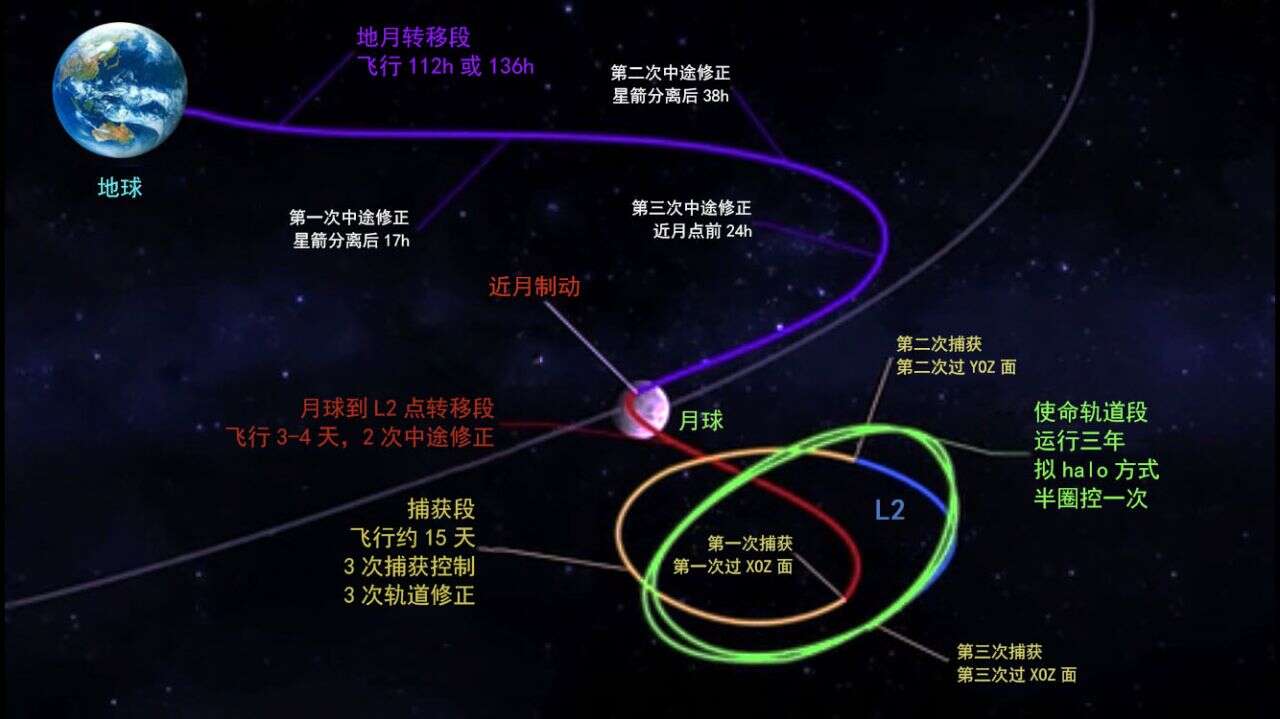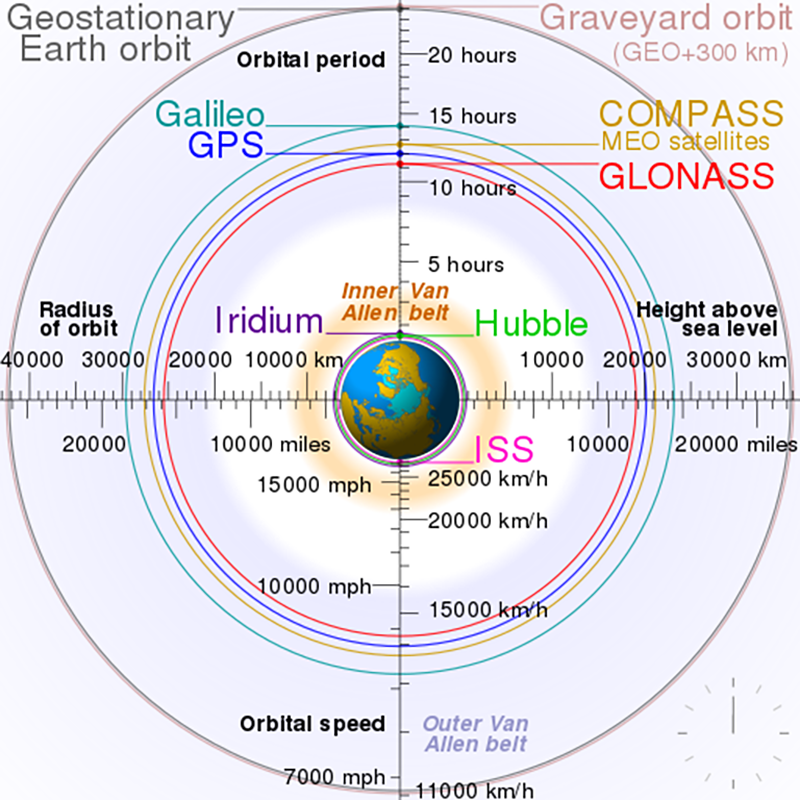China continues to push forward with its ambitious lunar base program, one that supposedly aims for a manned lunar landing by around 2030. But there are emerging concerns that the satellites being sent to support this initiative could also have a far darker purpose—attacking the Pentagon’s most critical space-based assets that live in geosynchronous orbit, beginning roughly 22,000 miles above the Earth’s surface. These include strategic surveillance platforms, like America’s space-based infrared early warning satellite network that detects and tracks ballistic missile launches during their early boost stages and possibly beyond.
Defense One’s Patrick Tucker broke the story after noting comments made by Jeff Gossel, the top intel engineer within the Space and Missile Analysis Group that reports to the USAF’s National Air And Space Intelligence Center, at an Air Force Association gathering that took place last Friday. Gossel said that China’s Queqiao relay satellite, part of its larger Chang’e 4 lunar exploration mission to the dark side of the moon, took a ‘lunar swing-by’ path on its way to its final destination at Lagrangian Point Two. He is concerned that the satellite, or future satellites like it, may have a secondary mission that could include supporting craft that are anti-satellite weapons, not lunar surveyors or landing craft.
Gossel described the potential threat as such:
“You could fly some sort of a weapon around the moon and it comes back — it could literally come at [objects] in GEO… And we would never know because there is nothing watching in that direction… Why do you need a relay satellite flying around L2? So you can communicate with something that’s going to land on the other side of the moon—or so you can fly around the other side of the moon? And what would that mean for our assets at GEO?”
Gossel notes that the actual threat from Chang’e 4 remains small, but that it’s his job to identify these types of potential threats so that Pentagon can be better prepared in potential future conflicts.
China and Russia are racing to develop new anti-satellite capabilities. Just last month, we broke the story of what appeared to be a new Russian direct-ascent, air-launched, anti-satellite weapon, and it is just one facet of a layered anti-satellite approach Russia is taking when it comes to countering U.S. capabilities in space. China is also doing the same. You can read all about these emerging threats in this past feature of ours.
It is clear that America’s high-flying strategic satellites in geosynchronous orbit are increasingly vulnerable to attack. These include the aforementioned early warning satellites that serve a crucial role when it comes to ensuring America’s strategic deterrent. They not only warn of potential incoming ballistic missile attacks, but are sensitive enough to detect other significant heat-related events within Earth’s atmosphere. Other intelligence-gathering spacecraft, as well as weather, communications, navigational satellites, and more, that leverage the ability to stare persistently at one part of the globe also call the orbital region home. In total, roughly 600 satellites are up there, but not all of them are functioning.
While some may outright discount the possibility that China’s lunar space program is being used to also develop key military applications, I would tell them to look at all the other work being done in the anti-satellite space by China, much of which has to do with countering satellites in lower orbits. The ability to launch a sudden attack from behind on multiple strategic satellites that are built to provide early warning themselves seems like a highly relevant capability for the PLA to possess. Future space-based sensors that are now among the USAF’s highest priorities, such as those that can track ‘colder objects’ as they race through or above the upper atmosphere during the mid-course part of their flight, most notably hypersonic weapons, will call this orbital band home.
This, and China’s deep investment in hypersonic weaponry, in particular, is likely to press Beijing’s anti-satellite programs into high-gear. The Pentagon is open and clear about the fact that they see space-based sensors as the way to detect, track, and effectively counter hypersonic threats. And they are putting their money where their mouth is, with the objective of fielding the first of these satellites by early 2021. Possessing the ability to swat these sensors down during a conflict would be highly important to the PLA, not just when it comes to sapping America of its panoptic situational awareness, but also just to ensure China’s own high-end weaponry can be successfully employed.
If anything else, this also serves as yet another reminder of how America’s most unguarded flank is space. It also adds credence to initiatives that aim at moving away from large, expensive, hard-to-build and largely vulnerable satellites, to constellations of rapidly deployable smaller ones that are far more resilient when it comes to anti-satellite weapons attacks.
https://youtube.com/watch?v=DIXoUzOgFV8%3Frel%3D0
The very idea that the U.S. could have some of its most important space-based eyes suddenly poked out, leaving commanders in the dark when it comes to strategic events across an entire region of the globe, is and should be troubling. The Chinese have proven to be incredibly cunning when it comes to precisely identifying the Pentagon’s warfighting weak spots and exploiting them. Knowing just how much U.S. forces depend on space for their asymmetric combat advantage makes investing in elaborate capabilities to deny such an advantage make total sense. The fact that China could potentially be doing so while also pushing forward a moon shot initiative is a win-win, both in terms of deniability and in terms of return on investment.
With all the talk now being that the U.S. and China have entered into a new Cold War, only expect more suspicious and potentially ‘dual use’ Chinese space exploration initiatives in the future.
Contact the author: [email protected]
Source: Read Full Article


